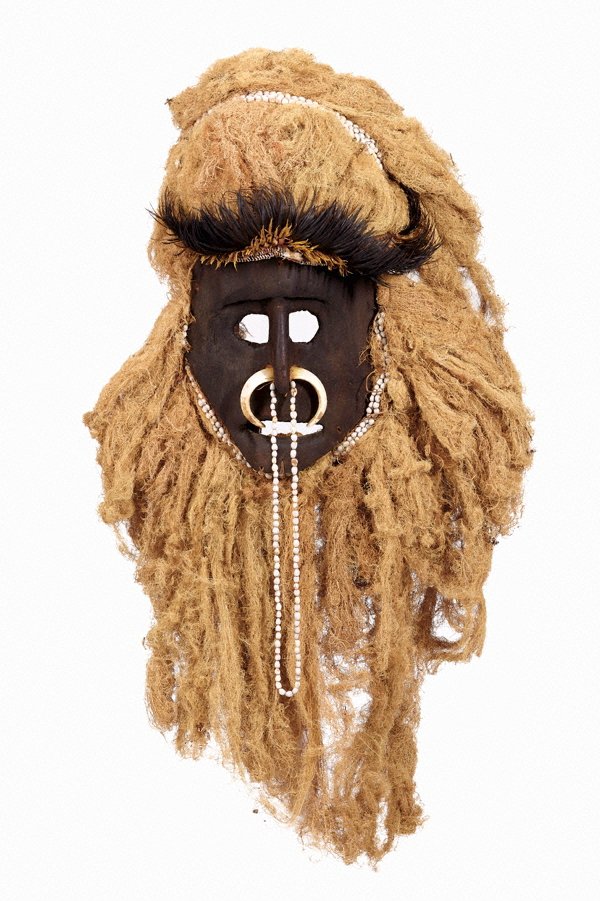-
Details
- Place where the work was made
-
Ofafina
→
Okapa District
→
Eastern Highlands Province
→
Papua New Guinea
- Cultural origin
- Fore people
- Dates
- mid 20th century
collected 1969 - Media categories
- Botanical material , Animal material
- Materials used
- wood, rattan, vine, cassowary feathers (Casuarius), pig tusks, coix seeds (Coix lacryma-jobi), nassa shells (Nassarius), plant fibres, plant fibre string
- Dimensions
- 104.0 x 61.0 x 20.0 cm
- Credit
- Purchased 1977
- Location
- Not on display
- Accession number
- 284.1977
- Copyright
- © Fore people, under the endorsement of the Pacific Islands Museums Association's (PIMA) Code of Ethics
- Share
-
-
About
The Fore people of the eastern highlands became well known through the research of Dr Carleton Gajdusek in the 1950s. Dr Gajdusek connected the fatal neurological disease known as 'kuru' to the past practice of funerary cannibalism.
Sorcery and the threat of war was once part of daily life for the Fore. Ancestor spirits, ghosts of the recently deceased and nature spirits were all part of a complex body of beliefs that emphasised fecundity, strength and mutual collaboration. With the introduction of Christianity during the 1950s, the Fore surrendered many traditional ceremonial practices.
When Stan Moriarty visited Ofafina village in North Fore territory in 1969 he witnessed dances which incorporated human skulls into masks covering the face. Christian missionaries banned the use of skulls, which were replaced by carved wooden masks.
[Exhibition text for 'Plumes and pearlshells: art of the New Guinea highlands', AGNSW, 2014]
-
Exhibition history
Shown in 2 exhibitions
Aboriginal and Melanesian art, Art Gallery of New South Wales, Sydney, 19 Oct 1974 -
Plumes and pearlshells: art of the New Guinea highlands, Art Gallery of New South Wales, Sydney, 30 May 2014–10 Aug 2014
-
Bibliography
Referenced in 2 publications
-
Tony Tuckson, Aboriginal and Melanesian art, Sydney, 1973, 31 (illus.), 50. cat.no. H44
-
Natalie Wilson (Editor), Plumes and pearlshells: art of the New Guinea highlands, Sydney, 2014, 81 (colour illus.), 160. cat.no. 26
-
